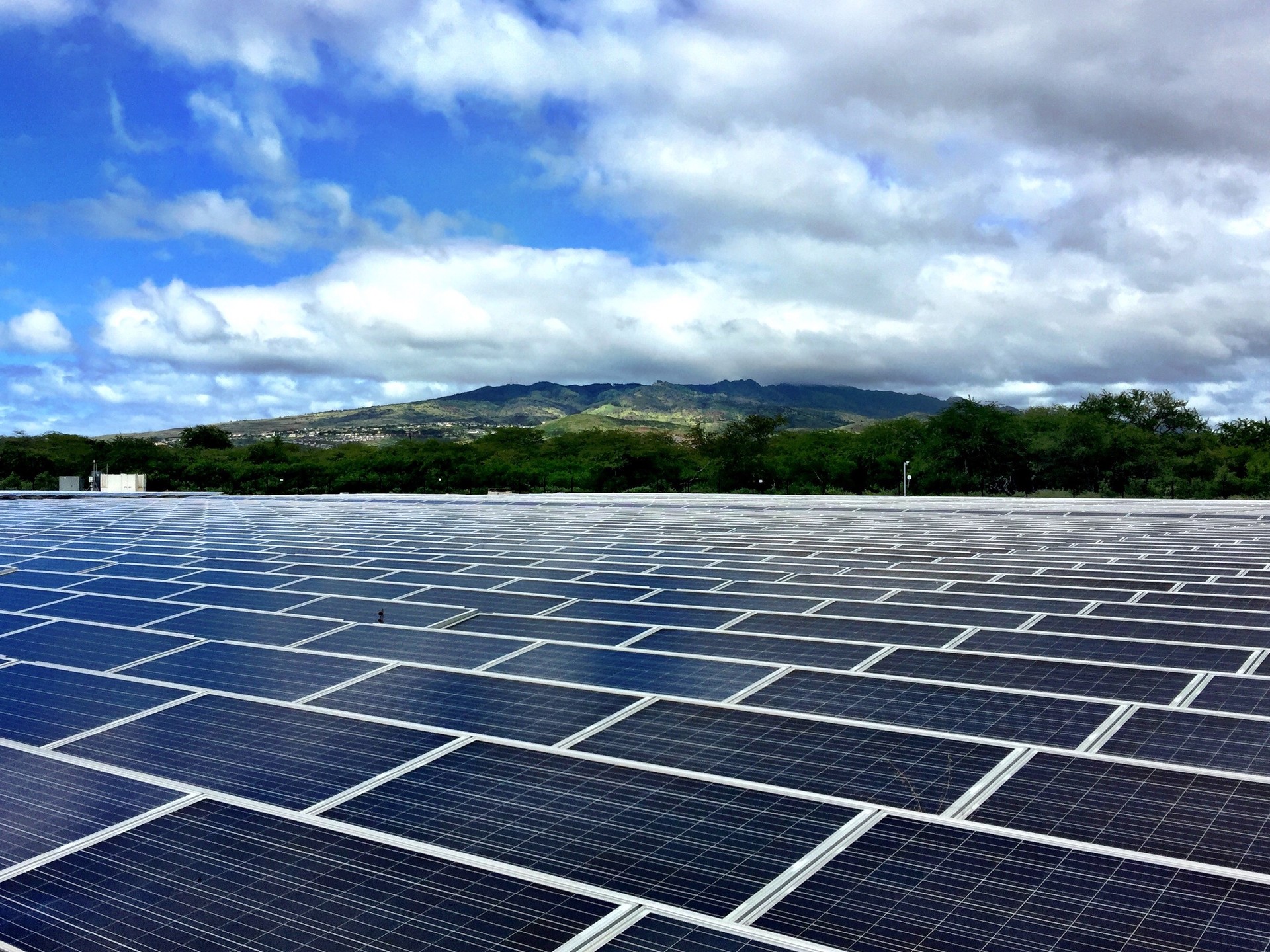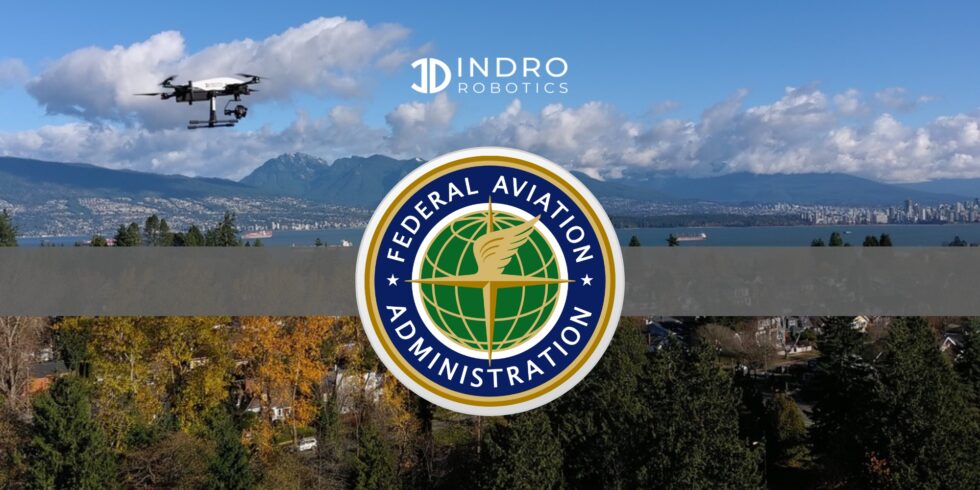By Scott Simmie
InDro Robotics has obtained what we believe to be a Canadian first: A waiver from the Federal Aviation Administration to conduct Beyond Visual Line of Sight flights.
The waiver will allow InDro to expand its successful program of remotely piloted infrastructure inspections where we ship a drone to the location – and instruct a person there to be a Visual Observer during the flight.
Specifically, the FAA waiver permits InDro to remotely operate drone inspections of fenced solar farms in Class G airspace, 10 miles (16 km) from airports. Operations can reach a maximum altitude of 400′ AGL.
The waiver opens the skies for InDro to tap into a large market, remotely inspecting some of the 2,500+ solar farms in the United States.
Below: A solar farm in Hawaii. Photo courtesty Reegan Moen, US Dept of Energy.

Inspection without the hassle
Solar farms require regular inspection. Traditionally, these have been done by employees walking the grounds with a handheld thermal sensor, plus their own visual inspection. But this task is time-consuming, and can last days at a large facility.
As a result, many solar farms have switched – or are in the process of switching – to aerial inspection using drones. Combining visual and thermal inspection from above, issues with broken, malfunctioning and even dirty panels can be quickly identified. Many solar farms can be inspected in less than an hour and even large installations usually take less than a day.
But doing drone inspections with employees comes with a cost. The pilot must meet FAA Part 107 or Transport Canada standards. That involves training, time and money before even purchasing a drone. Plus, with next-generation drones coming out with better sensors, longer flight times and newer features, it doesn’t take long before that drone will require replacing.
The InDro Robotics solution is simple and cost-effective. We ship the client a current drone, suited to the task. We work with someone on-site, instructing them how to turn on the drone and act as a Visual Observer. One of our pilots then flies the mission remotely, maintaining continuous communication via phone with the visual observer.
With a solid 5G connection, data is uploaded directly to the cloud during the mission and processing begins. We can have a report identifying anomalies in the hands of most clients shortly after the mission. Once the flight is complete, the drone is packed up and shipped back to InDro.
We’ve done this at multiple facilities in Canada already, operating from hundreds of kilometres away. Receiving the FAA approval means we’ll be able to deploy the same solution in the United States.
And what does that look like? Well, like this – whether you’re 100 kilometres away or 5,000:
Rigorous criteria
As with Transport Canada’s Special Flight Operations Certificate (SFOC), obtaining an FAA waiver requires that an applicant satisfy the regulator on multiple fronts.
The FAA application, for those interested, asks a high number of detailed questions requiring equally detailed answers. Here’s the first from the InDro application:
§ 107.31 Visual Line of Sight Aircraft Operation Question: Describe how the Remote Pilot in Command (RPIC) will be able to continuously know and determine the position, altitude, attitude, and movement of their small unmanned aircraft (sUA) or Drone and ensure the sUA or Drone remains in the area of intended operation without exceeding the performance capabilities of the command and control link.
“When the RPIC or person operating the small unmanned aircraft system (sUAS) or Drone cannot see the sUA or Drone, how will they know, at all times, the current real-time: Geographic location Altitude above the ground Attitude (orientation, deck angle, pitch, bank), the direction of flight of the sUA or Drone…”
And that’s just one from a series of Q&As that stretched over seven dense pages of single-space text.
At the end of the day, however, it isn’t about individual answers. It’s more about the big picture of them taken collectively. Such permissions ultimately come down to this: The regulator must feel the mission poses minimal risk to crewed aircraft and people and property on the ground. They must also feel confident the operator has the expertise to carry out the mission as planned.
InDro satisfied this on both fronts, receiving a waiver valid until December 31, 2026.
We contacted the FAA Press Office to inquire whether any other Canadian company has ever received a waiver. They couldn’t answer that, stating that “Part 107 does not address company ownership, but restricts all 107 operations to ‘…within/in the United States.'”

A busy year of flying
We were in the air for clients – and for R&D – a lot in 2022. In fact, we recently tallied up our flights for an internal Town Hall meeting, and decided to share.
The high points?
- A total of 336 flights carried out, including missions in Canada, the US, South America and Saudi Arabia
- 40,802 aerial photos captured
- 487 kilometres of flight using multirotor drones
“All of our field operations were successfully completed,” Flight Operations Lead and GIS specialist Eric Saczuk told staff during the Town Hall. “And that speaks a lot to the quality of the team – to all of the work that goes on in the background has allowed us to have that success rate.”
During the townhall, it was revealed that the only incident encountered in 2022 operations was a landing gear issue on a single flight.
“If that’s all that happened with more than 400 active flights from all over the world,” he continued, “We’re doing something right. We have a great team, and great products.”
Below: A graphic from the internal InDro Town Hall showing highlights of the company’s drone operations:

InDro’s take
InDro began as an R&D company doing work exclusively in the drone space. And while we’ve expanded to ground robotics, pushing the envelope in the RPAS arena is still a very large chunk of what we do. Our new InDro Pilot software and hardware solution, for example, turns any Pixhawk-based Enterprise drone into a tele-operated system capable of dense and highly secure real-time uploads during missions.
The company has flown many Visual Line of Sight missions in the US already; the new FAA waiver will now allow InDro to deploy its teleoperated system.
“We’re pleased the FAA has seen fit to grant us this BVLOS waiver,” says InDro CEO Philip Reece. “Permitting these kinds of teleoperated missions will save clients both time and money, while ensuring they still receive best-in-class piloting and data acquisition/interpretation. We have deep expertise in solar farm inspections – and look forward to carrying out missions with this waiver.”
Interested in learning more? Feel free to contact Account Executive Luke Corbeth.

